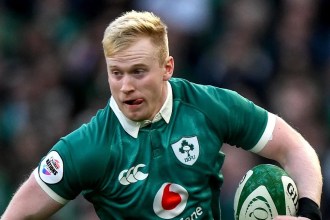In a notable shift in the landscape of collegiate athletics, Democratic senators introduced the Student Athlete Fairness and Enforcement (SAFE) Act, aiming to reform how college sports conferences handle their media rights. This legislation specifically addresses the 1961 law that currently prohibits conferences from collectively selling media rights, which many believe has led to substantial disparities in revenue distribution across college sports programs.
The Context and Purpose of the SAFE Act
The SAFE Act is primarily driven by the rapidly evolving nature of college sports, particularly concerning Name, Image, and Likeness (NIL) rights. Senators Maria Cantwell, Richard Blumenthal, and Cory Booker have presented the bill as a means to protect not just the interests of student-athletes, but also to ensure smaller leagues and Olympic sports do not get sidelined. “We take a broader approach of: How do we solve the fundamental problem of implementing NIL rights while keeping revenue for women’s and Olympic sports?” Cantwell remarked in an interview. This initiative responds to growing concerns that the more lucrative programs, often referred to as the “Power 2” conferences, would monopolize resources, leaving other programs to scramble for funding.
The Current Media Rights Landscape
Presently, college sports conferences negotiate their media rights individually, resulting in significant disparities. For instance, the Big Ten Conference recently generated nearly $958 million from its media rights, while the Big 12 generated about $558 million—a striking 52.7% difference. This disparity raises concerns about the ability of smaller programs to compete effectively against bigger conferences that attract elite talent, particularly in profitable sports like football and basketball.
In light of the recent changes in revenue-sharing policies facilitated by the House antitrust settlement, schools are allowed to share a portion of their revenue—up to 22%, equating to about $20.5 million—to pay athletes for their NIL rights. This has left many non-Power 2 conferences grappling with how to attract top talent while still maintaining funding for other essential sports.
Antitrust Protections and Revenue Sharing
A key feature of the SAFE Act is its proposal to extend antitrust protections akin to those granted to professional leagues like the NFL. Such protections would allow conferences to pool their media rights, potentially increasing collective revenues significantly—estimates suggest up to a $15 billion increase. This change could democratize financial opportunities within college sports, averting a scenario where only a few dominant conferences thrive while others falter.
Investment in college athletics has led to discussions about the potential for super leagues, where major conferences could consolidate their media rights for even more robust revenue generation. The SAFE Act proposes a thoughtful alternative to the stalled SCORE Act, which had previously made headlines for its focus on limited antitrust protections and pre-empting state laws in favor of a federal framework.
Safeguarding Student Athletes
The SAFE Act is not solely focused on financial restructuring. It proposes stronger protections for student-athletes, emphasizing safeguarding their scholarships and healthcare benefits. The legislation would limit transfers between schools to two times, reflecting an effort to maintain stability within rosters and promote student-athlete retention. Moreover, it seeks to empower the Federal Trade Commission and state attorneys to tackle violations related to third-party collectives overseeing NIL deals.
Moreover, the bill addresses local market access to games, stipulating that football and basketball games should not be placed behind paywalls, echoing similar practices in the NFL. This provision aims to foster a stronger connection between universities and their communities while promoting broader access to collegiate sports.
Implications for Women’s and Olympic Sports
Another significant aspect of the SAFE Act is its commitment to ensuring that additional revenue generated through pooled media rights is funneled back into maintaining scholarships and roster positions for women’s and Olympic sports. Cantwell stated, “We’re trying to be creative in how we can help some of these non-revenue sports grow in the future.” This holistic approach aims to elevate less prominent sports while ensuring that the financial incentives of NIL deals do not eclipse the foundational values of college athletics.
Conclusion
The SAFE Act represents a progressive change in the way college athletics may function in the future. By allowing conferences to pool their media rights and offering protections for student-athletes, the legislation seeks to create a more equitable landscape within college sports. As the bill navigates the legislative process, it poses necessary questions about the future funding and integrity of collegiate athletics, emphasizing a balance between lucrative opportunities for student-athletes and the preservation of diverse sports programs.
As the conversations around the SAFE Act continue, stakeholders, including universities, athletic programs, and student-athletes alike, will need to stay engaged, advocating for outcomes that support a flourishing, inclusive environment for collegiate athletics. The passage of this bill could not only secure billions in additional revenue but also redefine the role of college sports in American culture, prioritizing both financial sustainability and the well-being of student-athletes across the board.









